Who is Hinako Sugiura?
As far as most American comics readers are concerned, she’s a sizable entry in Frederik L. Schodt’s Dreamland Japan (1996), an article from which much of the web-based information on Sugiura has been obtained (this introduction being no exception). The following points should suffice:
- Born in 1958 into a family of kimono makers.
- She often wore traditional dress during her public appearances, yet Schodt calls her “a thoroughly modern person who once listed her hobbies as assembling plastic model kits and playing with computers”.
- Studied visual communication and design in university before dropping out to study with Shisei Inagaki, an expert on the Edo period.
- Worked as an assistant to the mangaka Murasaki Yamada and was a contributor to Garo. Schodt has the following to say about one of her ukiyo-e inspired stories: “sometimes she dips so deeply into tradition that the pages truly look like the kibyoshi of old, which she acknowledged to be a powerful influence.”
- An expert on Edo period customs which led to a number of television appearances. I have at hand one of these works (images reproduced below) which shows charming drawings and descriptions of the period in question.
- Won the Japan Cartoonist’s Association Award of Excellence in 1984 and the Bunshun Manga Award in 1988.
- Died in 2005 of “throat” cancer
I came to Sugiura’s work for the first time through a single volume (Chinese language) reprinting of her three volume Hyaku Monogatari (One Hundred Tales; serialized 1986–1993). It is from this collection that one of her earliest translated comics appears to have been taken (“Apparition of an Eel”; Mangajin No. 40, Nov 1994, p. 74). [1].
My copy of One Hundred Tales is prefaced with an explanation of the title which is derived from the Hyakumonogatari Kaidankai, a game where a group of acquaintances gather in a small room, light a hundred candles and tell tales of the supernatural to each other. A candle is smothered each time a story is concluded, and the illustration which prefaces the book (by the ukiyo-e artist, Utagawa Kuniyoshi) depicts the moment when all the candles have been extinguished and a host of unearthly beings begin to materialize.
In deference to tradition, Sugiura stops her cycle short of the 100th tale, the telling of which is said to bring forth these demons which will drag the hapless storyteller down to hell.
The stories in the collection have been selected as being best representative of the kaidan of the Edo period. As with corresponding Chinese classics like the Liaozhai, the narratives which fill One Hundred Tales map the numinous landscape of the fields, villages and towns of old Japan; that strange mixture of folklore, tradition, superstition, and mere insanity which has survived down the centuries. Thus a man is greeted by bestial personifications of his family and friends..
…a curious creature implores a man to tend to her grave…
…and a well-mannered and completely invisible guest comes a calling.
The last is found in a story titled, “When a stranger comes to visit – Two tales” (74th and 75th Stories). It is among the very best in the collection; a story about the human traces which nestle silently in the corners, the unseen visitors who will not enter through open doors nor open any closed ones, and the invisible friends who only ask for a kind word and a greeting. It quietly delineates a familiar architecture and the curious space between the mysterious and mundane in our lives.
The instigator of these stories is a nameless old man; a character who appears in both the opening and closing tales of the book as well as at various points in the collection, enjoining his friends and acquaintances to tell their own tales. The author of the book’s preface sees him as a stand-in for Sugiura herself, an easy enough insight which adds little to our actual appreciation of the manga.
The tone of these stories is gentle and they are meant to entertain and amuse rather than terrify. The plots may be captured in the course of 2-3 sentences but their texture and depth reside in Sugiura’s brushwork and graphic narrative which varies in style; starting out tentatively with compositions derived from manga before proceeding to charcoal drawings and brushwork in keeping with fine art traditions. I’ll close with an example of this from the 57th and 58th tales in the anthology collectively titled, “Two Explorations of the Path to Immortality” reproduced with a simple translation below (read from right to left).
[Page 1]
- This story comes from a hunter who lived in Dewa Province.
- The hunter and his grandfather were chasing after a deer when they lost their way in a valley.
- Suddenly, it started raining heavily and they took shelter in a cave.
[Page 2]
- Within they saw an immortal sitting-zen, his eyes half-open, his breath steady and quiet.
- Many years later, the hunter and his grandson passed by the same valley.
[Page 3]
- They found the immortal in the same cave.
- The figure embedded in the rock was as dry as a lotus seed but when examined with a branch, his belly still appeared soft.
- It had been fifty years since the hunter last saw the immortal as a child.
[Page 4]
- The next story is from Yamato Province (present day Nara Prefecture).
- A monk well-versed in the magical arts,
- was fasting and sustaining himself on a diet of pine leaves. He confined himself deep in the mountains for a thousand days.
[Page 5]
- At the end of this period , his disciples went to receive him.
- His eyes shone brightly, his flesh was shriveled, his limbs withered and he was unable to produce a sound.
[Page 6]
- A strange growth of hair and bones was seen on his body.
- Wing-like tumors erupted from his back.
- He was helped back to his room but disappeared soon after.
[Page 7]
- On nights with a full moon, a shadow can be seen on the mountains.
- It has been said that it resembles a large praying mantis.
* * *
Sugiura’s work here has little to do with the dictates of the marketplace, a fact which makes its publication in America unlikely though not improbable. Little wonder then that Schodt closes his passage on Sugiura with lines remarking on her departure from commercial manga:
“…in 1993 she decided she was ill-suited to the life of a manga artist. At the age of thirty-five, claiming to be dissatisfied with her artwork and unwilling to keep up with the brutal pace of commercial manga publishing, she announced her retirement.”
As for the English-speaking world, a more mature and demanding audience will be required to ensure an adequate reception for such manga, one which can look beyond the simple dictates of entertainment to appreciate the depth and breath of everything that lies beyond. Only time will tell if this will ever come to past.
[1] A link at manga helpers suggests that one of Sugiura’s stories may have been reprinted in Kaiki: Uncanny tales from Japan. I am not aware of any other official English translations of her work
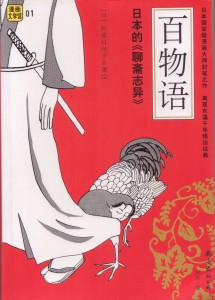


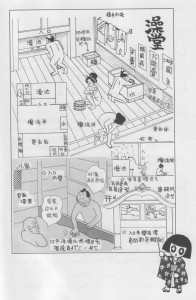
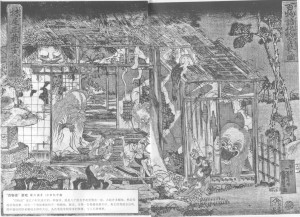
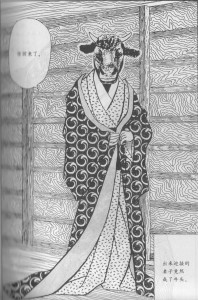
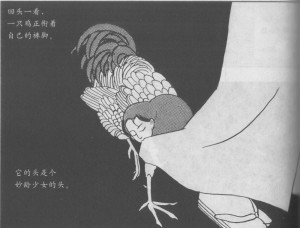
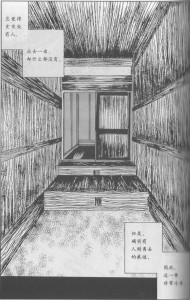
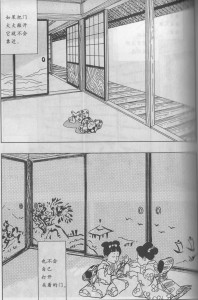
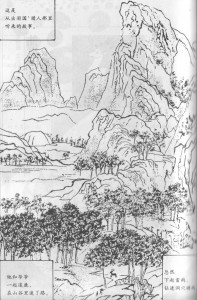
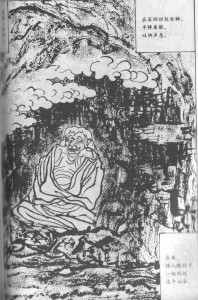
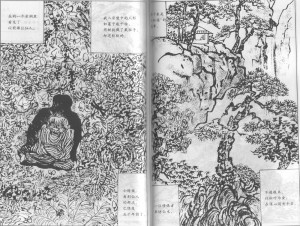
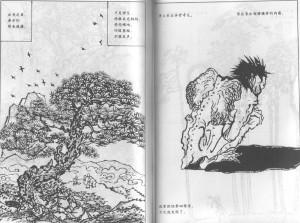

Those of you who read French may want to try this graphic novel: http://tinyurl.com/3af24bq http://tinyurl.com/37wlu82
Those pages are beautiful Suat. Thanks for writing about this.
Any English version, or prospect of same?
Thanks, Suat. Very interesting, I wonder if she was the one woman whose work was in the Garo show I saw earlier in the year.
And thanks, Domingos, for those links. I’ve taken to getting my manga in French lately, since their seem to be more translations of interesting work.
You’re welcome Derik! It seems to me that the same amount of junk is published in France and North America. The difference is that the French publish more interesting Japanese comics than North Americans (I can only think of a few books: _L’homme sans talent_ by Yoshiharu Tsuge, the above books by Sugiura, _Un gentil garçon_ and _Paradis_ by Shinichi Abe, _L’homme qui marche_, _Quartier lointain_, _Journal de mon père_ by Jiro Taniguchi). Even so it’s far from enough if you ask me. Besides, Ponent Mon publishes in English: http://tinyurl.com/3x3pppm
Sorry for not making much sense above. The right link: http://www.ponentmon.com/new_pages/english/princ.html
I’m reading Shirato’s Kamui-Den in French right now and finding it very interesting and enjoyable if a little too didactic at times.
Alex: You mean of One Hundred Tales? Not impossible but I haven’t heard of anything in the pipeline. Even less commercial work has been translated into English though probably not to great success financially speaking. Things like Red Colored Elegy and Times of Botchan for example.
And just in case it does get published at some point, I should add that One Hundred Tales improves through the course of its pages as Sugiura gets more adventurous. It may be a better book in its latter half. The earlier half seems more conventional graphically speaking.
Derik: Don’t think she’s the female artist in that Garo Show (the one with the Ryan Holmberg catalog?). That exhibition was about the first decade and Sugiura came on the scene much later. She’s not in the catalog either.
Ah, good point. The woman (whoever she was) isn’t in that catalog at all, so I wasn’t sure, but the time period makes sense.
Speaking of Japanese comics in English, would you recommend, this one: http://tinyurl.com/2f8u8bt ?
I don’t know how it reads in English, but anything by Mizuki-san is well worth taking a risk on. He is more well-known for his yokai stories, but his war stories were done later in his career and came about largely because of the anger he felt toward the far-right voices in Japan who were trying to whitewash Japan’s war history, especially fellow manga-ka, Kobayashi Yoshinori and his ilk. Mizuki, like American counterparts such as Jack Kirby and Joe Kubert, et al, served and lost an arm in the course of his WWII service. It would be a disservice to both Vonnegut and Mizuki to compare them stylistically, but attitudinally they have much in common. “Make war no more” from a Japanese “grunt’s” perspective.
Well, Kirby and Kubert did not lose an arm in WWII, so that sentence should have read:
Mizuki, who, like Kubert and Kirby, was a soldier in WWII, lost an arm during his service.
How’s that?
Thanks Tim! I don’t have much respect for comics awards, but they go to the right person sometimes, I guess… I say this because this comic got some kind of award at Angoulême…
Kubert didn’t serve in WW II.
http://erogekiga.blogspot.com/2010/11/guest-star-1.html
Thanks so much for this fascinating article. I loved Red Snow and this seems very much in the same genre. Any others that you might recommend as well?
Excellent article, and very informative. I have the same book mentioned in this article, a flipped Chinese edition of Hyaku Monogatari. It is my intention to begin scanlating it soon, releasing as many of the stories in English as I can (and putting the raws out there for anyone else who wants them). Before I begin the debinding process, I have 2 questions:
1) As far as you’re aware, have any scan groups worked on this book, or have any Western Publishers licensed the work since writing this article?
2) Is it OK for me to use your translations for ‘Two Explorations of the Path to Immortality’? A Chinese friend of mine has already agreed to help translate several stories (maybe more), but I might as well edit the one you’ve already translated first.
Thanks.
I didn’t do a thorough check at the time but I’m not aware of any scanlations or licensed work.
You can use the translations above but you should double check it.
Thanks. I obviously checked myself, but couldn’t find anything relating to scanlations or English licenses, as you can see:
http://www.animenewsnetwork.com/encyclopedia/manga.php?id=5759
http://www.mangaupdates.com/authors.html?id=5785
I’ll be sure to run it by my translator for approval first. Your translations seem quite accurate though. Thanks again.
Here is a English translation of the first part of Hyaku Monogatari
http://www.mangahere.co/manga/hyaku_monogatari/
Thanks for the link. Seems to be only 3 translated stories but beggars can’t be choosers.